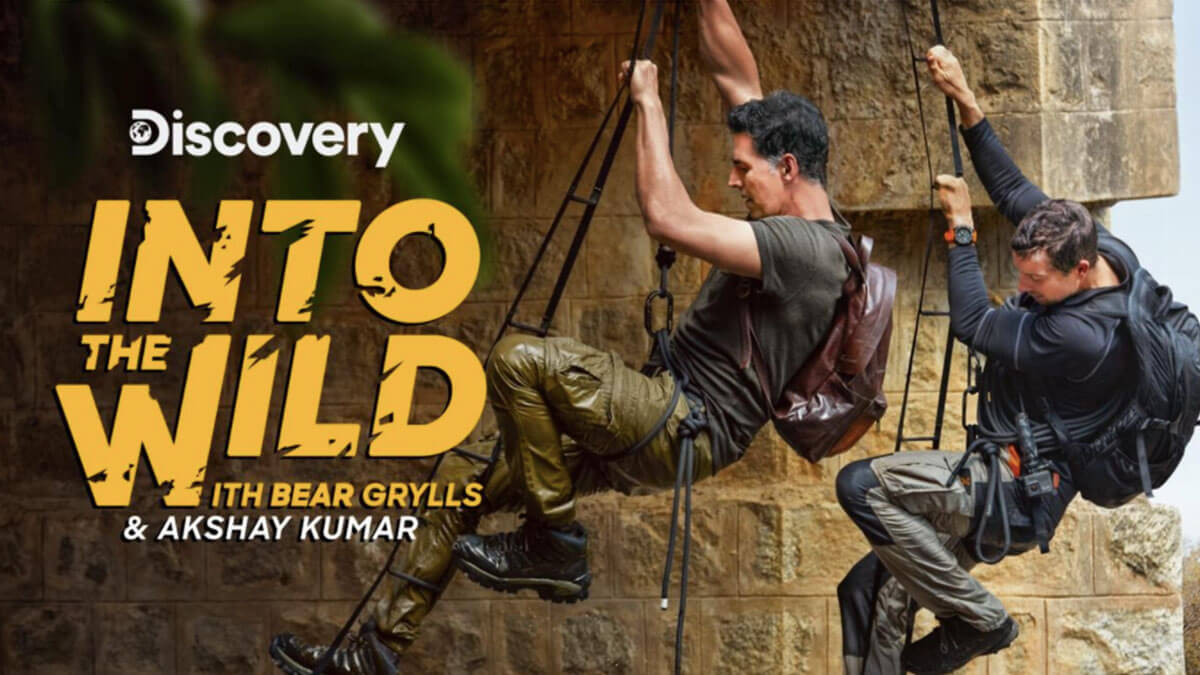Animals are majestic creatures that are most in their element when left to live free in the wild. The same can be said for untouched and preserved natural landscapes. Unfortunately, human activities such as hunting and land reclamation have impacted the lives of animals and the natural environment. Through Into the Wild with Bear Grylls and Akshay Kumar, Discovery Channel reminds viewers of how precious wildlife is through the breathtaking sights that the Bandipur Tiger Reserve in Southern India offers. Together, British adventurer Grylls and Bollywood actor Kumar will embark on a classic military-style mission to survive the wilderness while also appreciating the nature around them.
The show premieres at 9:00 PM on Sunday, September 20, only on Discovery Channel, which is available on Sky Cable CH 39, Cignal TV CH 140, and Destiny Cable CH 56.
As Grylls and Kumar endeavor to show the beauty of the natural world, we are reminded of our responsibility to keep nature safe, not only for us, but for the animals and every living being in it. Read on for tips on how to do your own part in saving animals and their homes.
- Be a conscious shopper – This covers multiple bases from bringing your own bag when going grocery shopping to choosing cruelty-free and ecofriendly products. Buying reusable products is also a good way to lessen future waste. You can also bring your own utensils with you when you eat out if you know a place that only provides plastic utensils.
Being a mindful shopper can also extend to people who plan to have a pet. Adopt from a shelter or from similar sources instead of shopping from a pet store or a breeder to avoid struggling with ethical dilemmas that come with them, such as poor living conditions for the animals and treating them as a means for profit. - Eat more greens – You might have already heard it from a vegan friend, but eating meat adds more to your carbon footprint as well as water consumption. This is because raising, tending, and transporting animals takes up much more resources than it does to plant and harvest vegetation. Like with most new things, baby steps can get you to start a steady rhythm until you find your preferred pace and destination. What’s important here is to be conscious about what you eat and how it impacts the environment. In this situation, you can try assigning a day of the week when you won’t be eating meat.
Another alternative is to experiment with your favorite dish and slowly try to incorporate more meat substitutes into it until you can prepare it meat-free. - Get into gardening – If you have the space, you can turn your yard into a haven for wildlife. Planting flowers and shrubs can give pollinators like butterflies, bees, and birds a little nudge to do their job and help plants reproduce. You can also add a birdhouse to provide shelter for your feathered friends as they keep your yard clean of unwanted insects and weeds.
Even without a yard, you can still give wildlife a place in your home by creating a container garden. As the name suggests, plants are grown in containers like pots instead of into the earth. This is perfect for people who want to grow their own herbs, fruits, or vegetables but have limited space. - Find alternatives to zoos and aquariums – Hiking can also be a great way to experience nature while you learn along the way. However, since going outside is still a no-go, watching nature documentaries can also be a good method to learn about the world and its numerous inhabitants.
Supporting sanctuaries and nature reservoirs through donations and volunteering can also be a good way to lend a hand in restoring the wild and animals’ lives in it while being assured that they are being looked after by experts and trained personnel. - Educate yourself – All the aforementioned tips are just the tip of the iceberg. There are still so many things to know about and much more you can do to help wildlife from little things like reducing plastic use to more hands-on projects like making a bee hotel. The first step, as with most things, is to learn as much as you can. Some groups you can learn from, volunteer at, or donate to are Save Philippine Seas, Greenpece Philippines, and Haribon Foundation. Perhaps along the way, you can find which method speaks to you so you can do your part to save the world while enjoying yourself.
As you’ve most likely already heard, every little act counts. If everyone would be willing to do one little thing for the planet and stick by it, it can amount to something greater in the long run.
Click here for more stories like “Into the Wild: Giving Wildlife and the World a Fighting Chance”. Make sure to follow and subscribe to our social media accounts: Facebook, YouTube, Instagram, Twitter, and Kumu.






















